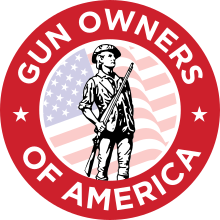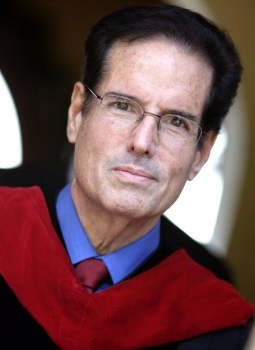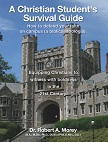This is a WorldNetDaily printer-friendly version of the article which follows.
To view this item online, visit http://www.worldnetdaily.com/news/article.asp?ARTICLE_ID=56047
![]()
Thursday, June 7, 2007

![]() The history of gun control, part 1
The history of gun control, part 1
![]() Posted: June 7, 2007
Posted: June 7, 2007
1:00 a.m. Eastern
By Sandy Froman
![]()
Philosopher George Santayana said that those who cannot remember the past are condemned to repeat it. It's true. One of the reasons to study history is to avoid repeating past mistakes. When it comes to freedom, we cannot afford to forget the lessons of the past. So you and I need to know the history of gun control, because history teaches us there is a terrible price to pay when we lose our right to keep and bear arms.
Over 200 years ago, when the Founding Fathers drafted the Second Amendment, no one questioned the need for private gun ownership. The Framers considered private firearms to be essential to protecting personal liberty, both as a means of opposing foreign threats and also as a check against excessive government power. The Framers were passionately devoted to the idea that a self-sufficient armed citizenry is the best means of preserving liberty.
But many on the left do not want you to know this. They keep the truth from being taught in public schools, and they even write books laden with falsehoods in a dishonest attempt to rewrite history.
Seven years ago, Emory University historian Michael Bellesiles published a book purportedly proving there were few guns and gun owners in early America. The book
garnered Columbia University's coveted Bancroft Prize. Two years later, primarily due to the efforts of a brilliant young research historian, Clayton Cramer, who had studied that period in history extensively, the book was revealed to be a total fraud, full of lies and fabrications. Bellesiles was forced to resign from Emory University and, for the first time in history, Columbia University rescinded the Bancroft Prize.
Every American who values his or her constitutional rights should know something about these frauds that gun control advocates perpetrate so we can be watchful and teach the truth to our young ones.
Early Americans were gun owners. Private firearm ownership was widespread from the coasts to the frontier, in both the North and the South.
Our ancestors not only knew the value of gun rights, they actually practiced those rights. Many early Americans provided for their family through their skill with a firearm, and many more Americans had a gun hanging over the hearth or in the bedroom to protect the house and the children against wild animals or criminals. These firearms were also seen as an insurance policy against American Indians, the British or French, and even against our own central government.
This honored tradition went completely unchallenged until the 1900s. Then New York passed the Sullivan Act in 1911, one of the first gun control laws. This law required that firearms small enough to be concealed on a person be registered. This state law became a test measure for future gun control laws.
Opponents of the Second Amendment started to mobilize at the federal level in the 1930s. It came during the New Deal, when the federal government was growing rapidly. Two laws enacted during this period, the National Firearms Act of 1934 and the Federal Firearms Act of 1938, established the first federal gun controls. While most of these regulations were uncontroversial by current standards (such as licensing gun dealers and regulating possession of machine guns), they introduced the concept of national regulation of firearms.
It was also during this time President Franklin Roosevelt appointed a number of liberals to the United States Supreme Court. Starting in 1937, the high court began moving in a liberal direction, and by the 1960s had become a court favoring full judicial activism, a judicial philosophy that has threatened our Second Amendment rights ever since.
During this period, anti-Second Amendment politicians began testing the waters on gun control. The highest-ranking official to do this was FDR's anti-gun attorney general, Homer Cummings. Attorney General Cummings started planning for federal gun control measures such as a national registry in the hands of the central government for guns and gun owners.
But then World War II broke out, and Germany and Japan invaded their neighbors. The American people were reminded how important it is to have a firearm handy when you need one. Cummings' early attempts to regulate guns and gun owners suddenly became unpopular. Gun control advocates lowered their voices until a more opportune time.
Most American leaders in both political parties were pro-gun. In fact, Democratic presidents Harry Truman and John F. Kennedy were NRA members. Gun control advocates were always present in policy debates, but did not have much political clout.
In the 1960s, gun control came back with a vengeance. Modern liberalism became the dominant political philosophy in this country. And after the deaths of JFK, Robert Kennedy and Martin Luther King Jr., an all-out national push for gun control was launched.
This period in the late 1960s was the beginning of significant gun control in America. Liberal activist judges, led by the Warren Court, enacted a widespread liberal agenda. American society was being secularized. President Johnson was forcing a hard-left agenda through the Great Society. And the Vietnam War was becoming increasingly unpopular. It was against that backdrop the left finally launched an open, concerted effort to implement national gun control.
And that's what we'll talk about next week, remembering that if we ignore the lessons that history offers us, our children will pay the price with their freedom.
The history of gun control, part 2 by Sandy Froman (06/14/2007)
Until Lyndon Johnson came to the White House in 1963 following the assassination of President John F. Kennedy, gun control was simply not a national issue. There were no significant federal gun control laws on the books, and the NRA was a shooter's organization that intentionally shied away from any political involvement.
All of that changed with the 1968 assassinations of Sen. Robert Kennedy and civil rights leader Martin Luther King. In the civil unrest that followed, the media found a new whipping boy – America's gun owners. The media blitz against gun rights was unprecedented and became the driving force behind Democrat leaders proposing national gun control.
Although JFK and his brother, Sen. Robert Kennedy, had been NRA Life Members, America's new president, Lyndon Johnson, was a committed gun control advocate. No president ever matched his power and his will when it came to controlling the legislative process. His attorney general and much of his senior staff searched for new ways to restrict gun ownership among the American people. This was part of Johnson's Great Society vision of an all-powerful federal government controlling the lives of ordinary Americans.
LBJ also put anti-gun judges on the federal courts at every level. Liberal Thurgood Marshall, an opponent of the Second Amendment, was appointed to the United States Supreme Court. All three branches of the federal government lurched to the left in most policy areas, including firearms.
Keep in mind that up until this time, private ownership of firearms was not in any meaningful way controlled by the federal government. Johnson's administration was the beginning of the federal government superseding state authority in all aspects of people's lives, including ownership and lawful commerce in their private property – in this case, firearms.
The other major factor that created the federal gun control movement was that the NRA, as an organization, was totally unprepared to deal with the media, Lyndon Johnson, or the anti-gun politicians in the U.S. House and Senate. Up until that point, NRA refused even to have a registered lobbyist. In fact, NRA sent mixed signals to the Hill in reference to Johnson's anti-gun legislation.
If NRA had held nominally pro-gun House members' feet to the fire, the 1968 Gun Control Act, or GCA, would not have become law. With no direction from NRA, however, those legislators simply didn't vote. And the worst piece gun control legislation in history was enacted into law.
GCA made many common gun-related commercial activities federal crimes. Suddenly, firearm sales became heavily regulated and restricted. Some supporters of GCA saw it as the first step toward the ultimate goal of ending private gun ownership in the United States. The GCA has served as the basis of virtually every piece of gun control legislation, federal or state, that has been enacted since.
Nothing changed politically for gun owners until former NRA President Harlon Carter, a true visionary and often a lone voice on the NRA board, convinced NRA that gun owners needed a powerful grass-roots lobby focused on saving the Second Amendment.
Following Senate passage of a Saturday Night Special bill, which would have banned one-third of the handgun designs in the United States, Harlon Carter got his way. NRA created the NRA Institute for Legislative Action, or ILA, in 1975.
With the creation of ILA, Carter and his small band of young staffers – talented communicators, lawyers, lobbyists, and grass-roots organizers – turned the battle on its head.
Just months after ILA was created, gun owners celebrated a remarkable victory when
ILA helped U.S. Sen. James McClure personally hand Massachusetts anti-gun rights Sen. Edward Kennedy an equally stunning defeat.
Kennedy wanted handgun ammunition banned by the Consumer Product Safety Commission as a "hazardous substance." When it came to a roll call vote, 75 senators – among them a majority of Democrats – voted against Kennedy's gun control scheme. Only 11 senators stood with Kennedy. The dynamic had changed. At last, frustrated gun owners across the country welcomed a real Second Amendment lobby.
With his singular vision of the future, Harlon Carter began recruiting young scholars, writers, researchers and lawyers who fervently believed in the Second Amendment as an individual right. Carter often said that we would see the day when these young men and women would be old and wise and their ideas powerful.
In my next column, I'll talk about what went wrong in the '70s and how grass-roots gun- rights activists worked with NRA to fix it.
Related special offers:
"Armed Response: A Comprehensive Guide to Using Firearms for Self-Defense"
"Shooting Back: The Right and Duty of Self Defense"
Sandy Froman is immediate past president of the National Rifle Association of Americaand a longtime member of the NRA board of directors. A practicing attorney in Tucson, Ariz., Froman is an international speaker on the right to keep and bear arms and an advocate for federal judges who will interpret the Constitution according to its original meaning.






































